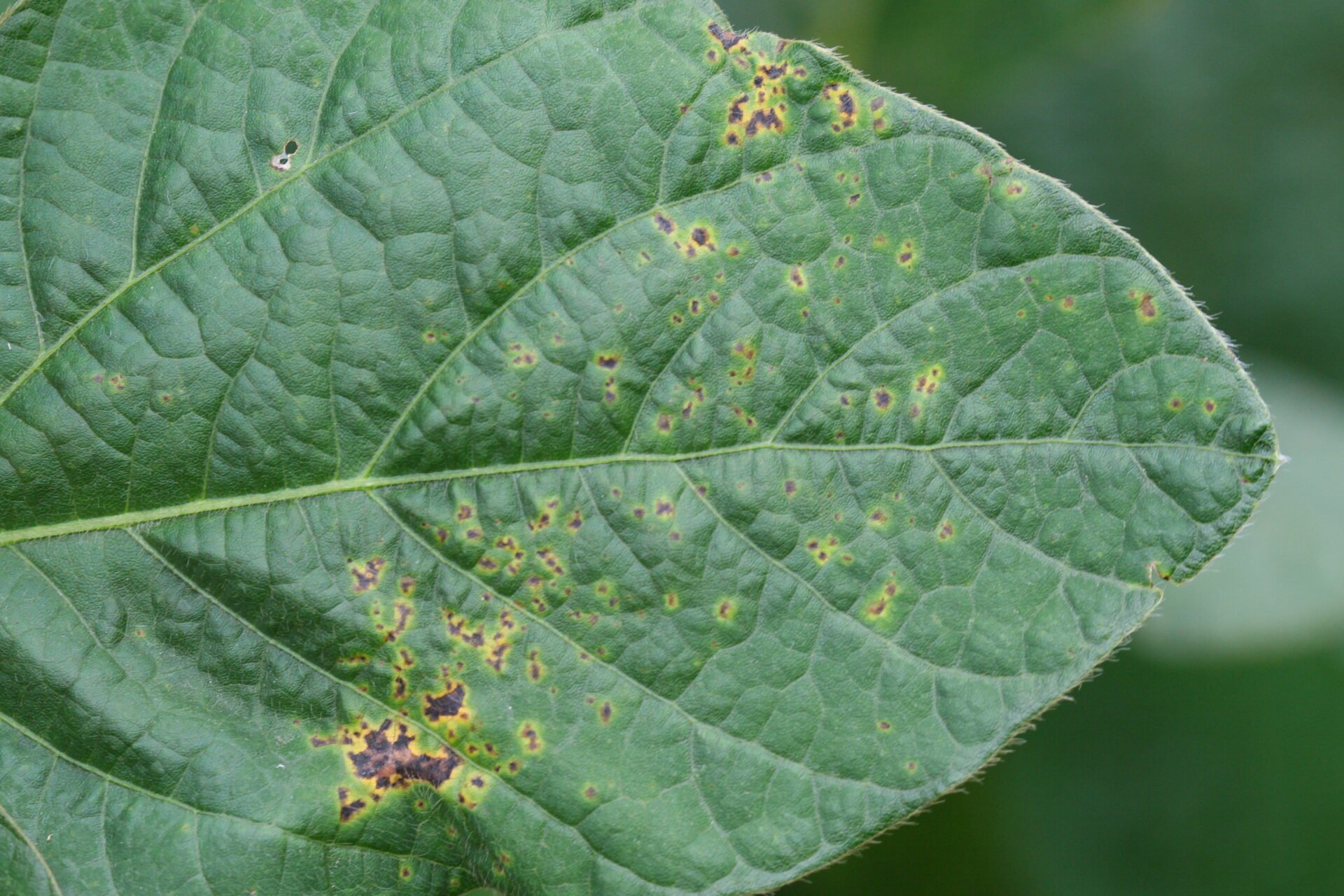


Recent research in New York, however, suggests that weeds are not an important source of the pathogen but that bean crop residues may be a significant source of inoculum. Hairy vetch and other weeds have been reported as over-wintering sources of the pathogen in Wisconsin. Since severe infection may not develop until after a major rainstorm, an absence of symptoms does not mean that the bacteria are not present.

Bacterial brown spot on beans often occurs after large epiphytic populations of the bacteria develop. Bacteria that exist this way are called epiphytes. These bacteria can grow on the surface of some plants, including snap and dry beans, without causing disease. syringae can cause diseases on several kinds of plants, but only a unique form of this bacterium causes that known as bacterial brown spot. Leaf symptoms of halo blight may be confused with those of brown spot because of the variability in margin and halo size with temperature. Pod symptoms of common and halo blight are very similar therefore, these diseases should be identified by leaf symptoms or the bacterium. Light, cream-colored bacterial exudate may be present on the lesions under moist conditions. The water-soaked areas enlarge and are sometimes surrounded by a narrow reddish zone. Pod symptoms first appear as small water-soaked spots and streaks on the pod surface (Figure 9). At temperatures above 80☏ halos are very small or absent. During severe infections the disease may become systemic and cause yellowing and death of new foliage. Greenish-yellow halos, highly variable in size, subsequently develop around these spots (Figures 7 and 8). Symptoms of halo blight initially appear as small water-soaked spots on the underside of the leaflets, eventually developing into numerous small, reddish-brown lesions on the leaves (Figure 7). Infected developing seeds may abort or shrivel and discolor as they mature (Figure 6). In humid weather, a yellow bacterial exudate may be present on the pod lesions. Similar water-soaked spots form on the pods and enlarge into reddish brown lesions (Figure 6). These lesions enlarge to 10 mm or greater (Figure 5) and may kill the leaflet. Leaf symptoms initially appear as water-soaked spots that become necrotic, light brown lesions of irregular shape with distinct, bright yellow margins (Figure 4). If infection occurs early in pod development, the pod may become bent or twisted at the infection site (Figure 3). Sunken brown spots can form on the pods (Figure 2). These lesions may enlarge, coalesce, and fall out giving the leaves a tattered appearance.

The initial foliar symptom of bacterial brown spot is small water-soaked spots that develop into distinctive necrotic brown spots about 3-8mm in diameter, often with a narrow, diffuse yellow margin (Figure 1). Common blight and halo blight are rarely observed nowadays presumably due to the routine use of certified seed. It is common in wet, cool years in snap and dry beans. These diseases can cause serious yield losses in heavily infected bean fields.īrown spot is no longer considered an economic problem in most years in New York. phaseoli, and halo blight, caused by Pseudomonas syringae pv. syringae, common bacterial blight, caused by Xanthomonas campestris pv. There are three distinct bacterial diseases that have been found on snap and dry beans in New York: Bacterial brown spot, caused by Pseudomonas syringae pv.


 0 kommentar(er)
0 kommentar(er)
